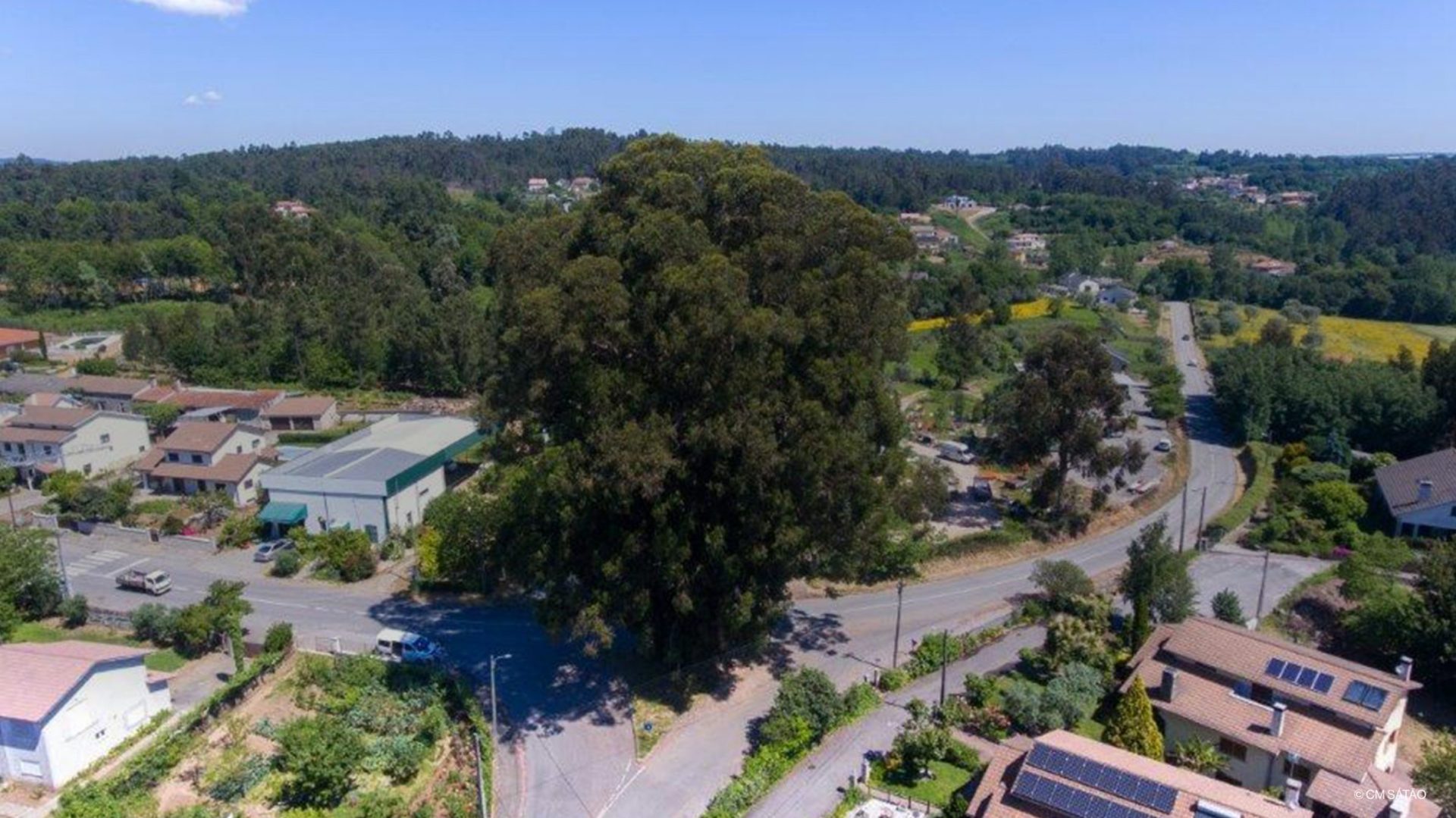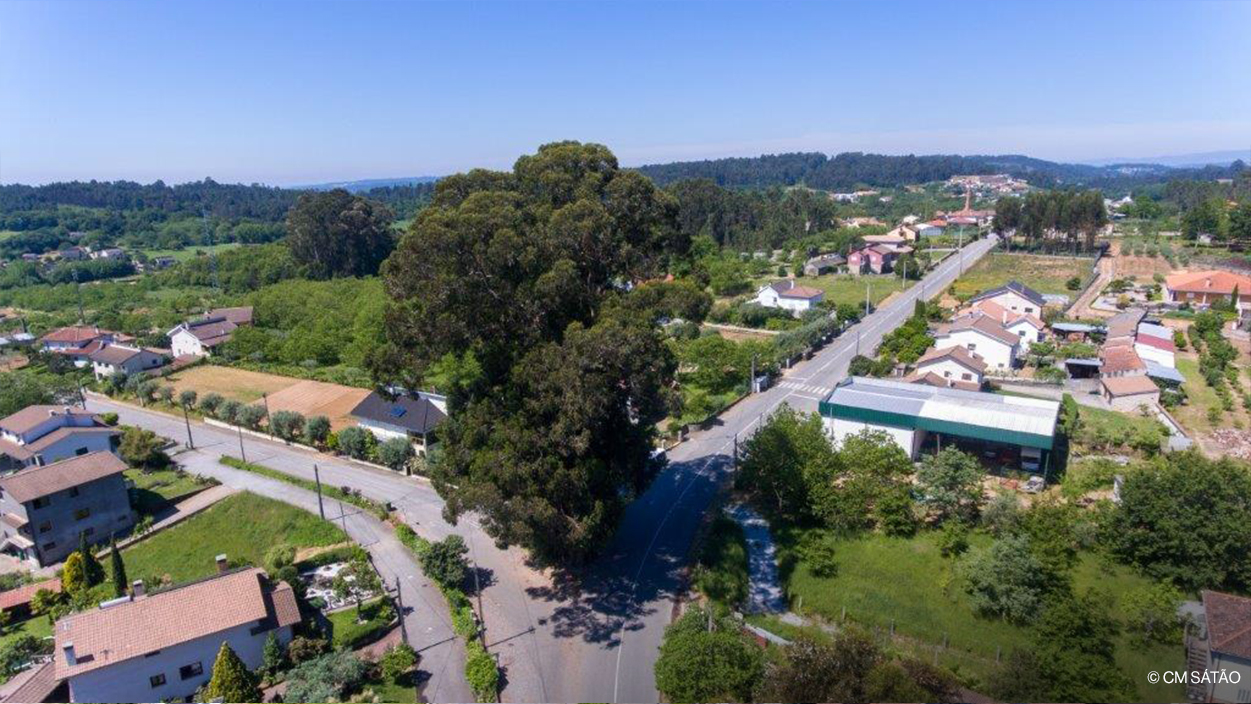For the first time since Portugal started voting in the Tree of the Year competition (2018), a eucalyptus is the front runner. The Contige eucalyptus, considered to be one of the largest trees in the country, was nominated by the Parish Council of Sátão, Viseu The voting, which has put forward the tree that will represent Portugal in the international Tree of the Year competition in 2023, will be open until 11.59pm on 5 January 2023, and there are lots of good reasons to vote for it.
There are plenty of reasons for the Contige Eucalyptus to be chosen as Portuguese Tree of the Year 2023. Among dozens of candidates, it reached the top 10 most iconic trees elected by the jury and is now up for public vote, which will only add to its rich century-old history.
In Portugal, there are hundreds of huge eucalyptus trees of various species. The Contige Eucalyptus is just one of these magnificent specimens. It was planted in 1878 and because of its size, diameter and height is officially considered the largest tree in the country. Satão Parish Council features it on its website as the biggest tree in Portugal, in that it is 43 metres in height, has an impressive canopy and boasts a perimeter at chest height of more than eleven metres; it requires eight people holding hands to fully encircle it.
The Contige Eucalyptus, which is of the Eucalyptus globulus species, has been classified as a Tree of Public Interest since 1964, by the Nature and Forest Conservation Institute (ICNF) – file no KNJ1/132. At the last measurement made by the ICNF in 2015, this remarkable tree was 46 metres high, had a crown 34 metres in diameter and the perimeter at the base of the trunk exceeded 13 metres. The tree also appears in the book Árvores monumentais de Portugal, by Ernesto Goes, a key work on specimens that are notable for their size, age, history or uniqueness.




